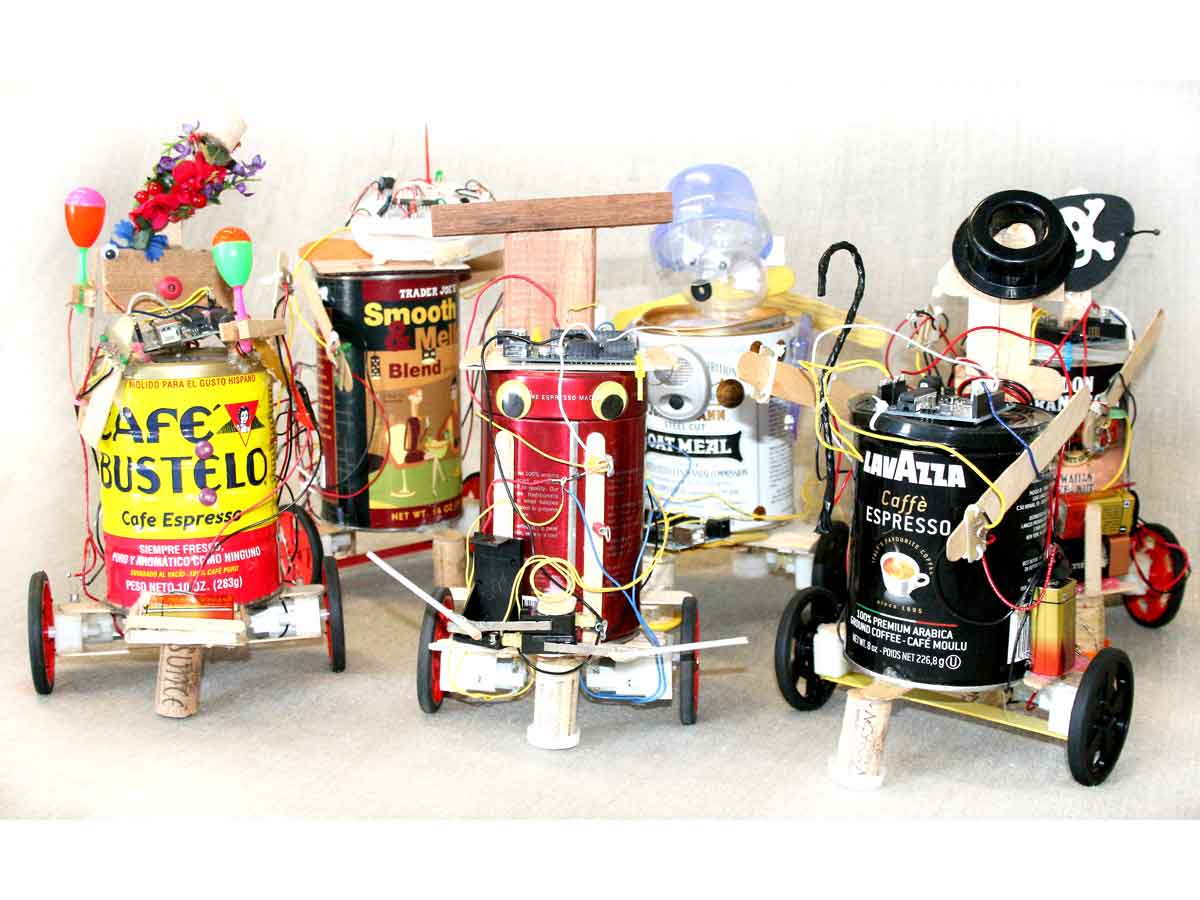I created CoffeeBots to observe chaotic behavior, by programming a bunch of them with subtle differences and a few choices — for example, how to respond to light sensors — and then turning them loose. To distinguish one from another, I named them after celebrities or historical figures and gave them each their own personality and style. I discovered that their interactions can create patterns that resemble our own social behavior!
Each CoffeeBot is constructed from household materials that give it its own unique characteristics. Functionality comes from motors, sensors, wires, and an Arduino microcontroller for a brain. You can easily program your robot to detect light, to follow it or run away from it, to turn this way or that (by adjusting the timing of the motors), and to blink its LED light in whatever patterns you choose.
This robot was designed to get the most amount of robotic behavior for the least amount of coding, the least amount of money, and the fewest number of parts. And to be built by someone with the least amount of experience, in as little time as possible. You can definitely do this!




